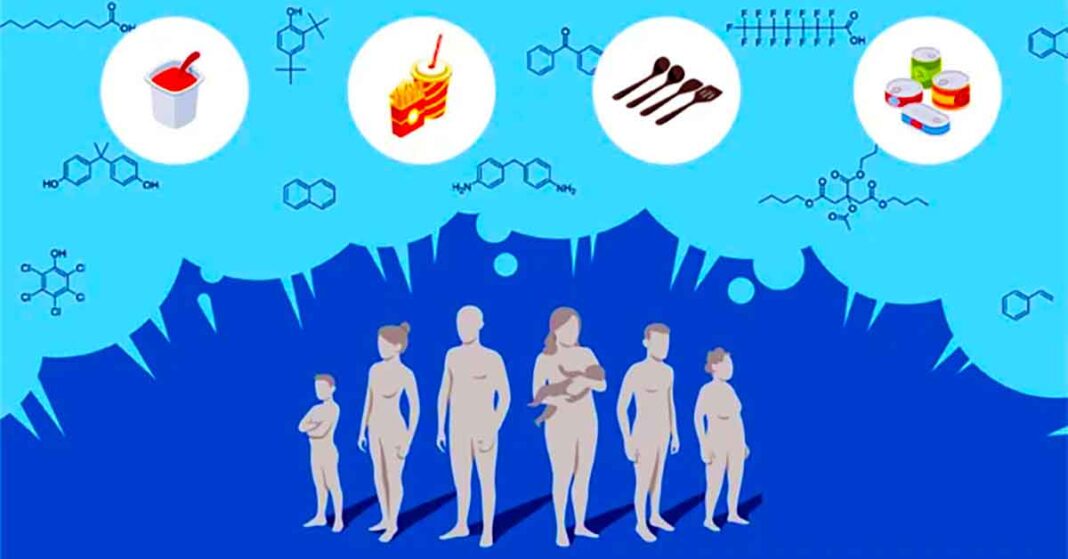We often hear of BPA (bisphenol A) and phthalates, common chemicals that are increasingly found in people and are linked with a variety of health issues, including hormonal and developmental problems. There are thousands of others.
Humans are repeatedly exposed to synthetic chemicals from food, drugs, household and personal care products, and pollutants, with many associated with the increasing prevalence of non-communicable diseases. Many are classified as food contact chemicals (FCCs), which migrate into foods from packaging, manufacturing and processing equipment, tableware, etc., and are then ingested.
Over 1,800 FCCs are known to migrate into the foods we eat, many of which have hazardous properties. Many others have never been tested for toxicity. The full extent of human exposure is unknown.
To close this knowledge gap, a recent study published in the Journal of Exposure Science & Environmental Epidemiology sought to conduct a systematic overview of those chemicals that have been found in human biomonitoring studies according to a previously published protocol.
The researchers first compared over 14,000 known FCCs to five biomonitoring programs and three metabolome/exposome databases. Then, they prioritized FCCs frequently detected in food contact materials and systematically mapped the available evidence for their presence in humans.
The study found evidence of a whopping 25% of the known FCCs (3,601) in humans, including 194 from human biomonitoring programs, 80 of which have a high hazard profile. Further evidence of exposure came from metabolome/exposome databases (mostly from blood) of 63 of the 175 prioritized FCCs included in the systematic evidence map, and 59 of those lacked hazard data.
Their results have been made available as an interactive dashboard to enable policymakers, public health researchers, and food industry decision-makers to make food contact materials and articles safer, reduce human exposure to hazardous FCCs, and improve public health.
Our takeaway: Our food is contaminated with thousands of chemicals, many of which are known to cause significant health issues, while others have unknown toxicity because they haven’t been studied. We desperately need stricter regulations barring the use of the most egregious chemicals and more research to discover what we don’t know about the others.
- Evidence for widespread human exposure to food contact chemicals — Journal of Exposure Science & Environmental Epidemiology
- FCChumon database — Food Packaging Forum
- BPA and phthalates — Westchester County Department of Health





